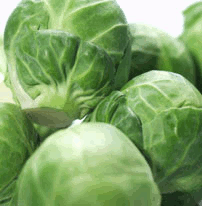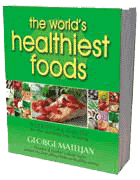What are the best foods to eat for heartburn/acid reflux?
Heartburn/acid reflux is a common condition that many people wrestle with in terms of diet. Although most people use the terms "heartburn" to describe many of the stomach problems they experience after eating (or overeating), in the world of science three new terms have been developed to refer to these kinds of problems. These terms are "GERD," "NERD," and "DGER."
Gastro-esophageal reflux disease, or GERD, is the most commonly used of these three terms. It is a large umbrella-term used in medicine to describe a set of problems involving 3 basic components. At the top of your stomach (the "gastro" part of "GERD") and bottom of your esophagus (the "esophageal" part of "GERD") is a coiled muscle, called the LES (lower esophageal sphincter). This muscle helps keep your stomach contents from fluxing back up (the "reflux" part of "GERD") into your esophagus. To function properly, the LES muscle needs to be clamped tightly shut when you are not eating, and opened properly when you are. If your stomach contents are allowed to flow up into your esophagus, the lining of your esophagus can become injured. That injury is an important part of what you then experience as heartburn.
Although the acids in your stomach appear to be critical damaging factors when it comes to GERD, there can be other factors involved. Because your stomach empties into your duodenum (the top part of your small intestine), fluids from your duodenum can also become part of reflux. DGER, or duodenogastroesophageal reflux, involves these intestinal fluids, including bile salts. "Alkaline reflux" or "bile reflux" are the older names for this condition. Sometimes the fluids that escape upward from the stomach appear to cause no damage to the esophagus. In this case, researchers have coined the term "NERD" for non-erosive reflux disease,
Smoke, citrus fruits like oranges and grapefruits, tomatoes, chocolate, alcohol, caffeine, mint oils (as found in breath mints, chewing gum, mouthwash, or toothpaste), and deep-fat fried foods all lower pressure on the LES and make it too easy for your stomach contents to come gurgling back up into your esophagus. Interestingly, the LES seems to have improved tone and tightness when plant proteins are added into the diet, so replacing some of your overall animal food intake with high-protein plant foods (like beans and lentils) may also help.
There are two kinds of reflux: acid reflux and alkaline reflux. Basically, these two kinds of reflux refer to the chemical balance found in your stomach contents. If the stomach contents are too acidic, and your LES lets them back up into your esophagus, you get acid reflux. If your stomach contents are not acidic enough (too alkaline) and your LES lets them back up into your esophagus, you get alkaline reflux.
Many factors contribute to these two different types of reflux but luckily all of the food changes described above that can help improve LES function can be helpful with both types of reflux.
In addition, the time you allow for eating, how relaxed you are when you eat, how much you eat at one sitting, and how well you chew your food impact indigestion at least as much as any specific foods you decide to eat. By cutting back on meal size (and having 6 mini-meals throughout the day instead of 3 large ones), chewing until you cannot tell what kind of food is in your mouth by the texture, allowing at least 20 minutes for eating at each occasion, and focusing on the pleasure of nourishing yourself (rather than your day's stresses) can all be tremendously helpful here.
For more personalized dietary guidance we suggest consulting with a nutrition-oriented healthcare practitioner such as a nutritionist, dietitian or naturopathic physician who can give you dietary strategies to best meet your personal health needs and goals.
References:
Fennerty MD. Review Article: Alternative Approaches to the Long-Term Management of GERD. Aliment Pharmacol Ther. 2002;22 Suppl 3:39-44.
Holtmann, G. Understanding GERD Symptoms in the Clinical Setting. Drugs Today (Barc). 2005;41 Suppl B:13-7.
Jones R, Galmiche JP. Review: What Do We Mean by GERD?--Definition and Diagnosis. Aliment Pharmacol Ther. 2005;22 Suppl 1:2-10.
Quigley EM. The Spectrum of GERD: a New Perspective. Drugs Today (Barc). 2005;41 Suppl B:3-6.
Stanghellini V. ReQuest: New Dimensions in the Assessment and Management of GERD. Drugs Today (Barc). 2005;41 Suppl B:7-11.
Hari Kumar R, Varghese T. (2004). Gastro Esophageal Reflux Disease - An Update. Calicut Medical Journal 2004;2(1):e13






